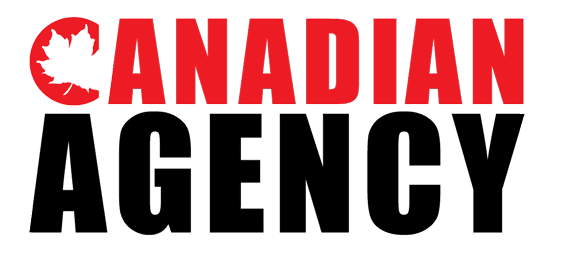When people hear the word “blockchain,” the first thought that usually comes to mind is Bitcoin or some form of cryptocurrency. For years, the technology was almost synonymous with digital coins, trading, and the wild swings of crypto markets. But blockchain is far more than a tool for decentralized money. In fact, we’re now living in a period where technology is quietly transforming entire industries from healthcare to supply chain, from real estate to education.
This transformation isn’t just about experimenting with digital tools. It’s about solving real-world problems that have persisted for decades: inefficiency, fraud, lack of transparency, and weak trust between parties. Blockchain is stepping beyond its crypto roots and reshaping the way industries operate. Let’s take a closer look at how this evolution is happening and why it matters.
The Shift: From Coins to Solutions
To understand blockchain’s relevance outside crypto, it’s important to revisit its essence. At its core, blockchain is a distributed ledger technology. Instead of one central authority owning and controlling the data, blockchain distributes information across multiple nodes in a network. Each transaction or update is securely recorded, timestamped, and verified by consensus. Once it’s there, it’s almost impossible to alter creating a permanent, trustworthy record.
Initially, this was revolutionary for digital money because it solved the “double-spending problem” without banks. But industries quickly realized that the same qualities of transparency, decentralization, and security could be applied to far more than finance.
Think of blockchain as a new kind of trust infrastructure. Wherever multiple stakeholders need to interact, exchange information, or verify authenticity, blockchain has a role to play. And some industries are already leaning on it in remarkable ways.
Healthcare: Restoring Trust in Data and Patients
Healthcare has always been plagued by challenges around data security and patient privacy. In most countries, medical records are fragmented across hospitals, clinics, and insurance providers. Patients often have little control over their own medical histories, while providers struggle with outdated systems that don’t talk to one another. On top of this, the risk of data breaches has grown, exposing millions of patients’ personal health information.
Blockchain offers a way forward. Imagine a decentralized health record system where every patient’s data is securely stored, encrypted, and controlled by the patient themselves. With blockchain, patients could grant access to doctors, insurers, or researchers as needed without losing ownership of their records. This ensures privacy while also improving the accuracy and completeness of medical information.
Startups are already experimenting with this. For example, some blockchain-based platforms allow patients to carry a digital health identity that’s universally recognized. Doctors can access past treatments, lab reports, and prescriptions instantly, eliminating paperwork and saving lives in emergency situations.
Blockchain also helps with pharmaceutical supply chains. Fake or substandard drugs are a global crisis, especially in developing nations. By tracking each medicine from manufacturer to distributor to pharmacy on a blockchain ledger, authorities can quickly verify authenticity and stop counterfeit products from reaching patients.
The result? Healthcare becomes more transparent, secure, and patient-centered, a significant departure from today’s fragmented, bureaucratic systems.
Supply Chain: Transparency at Every Step
Few industries demonstrate the power of blockchain better than supply chains. Supply chains are incredibly complex, involving dozens of players: manufacturers, suppliers, transporters, wholesalers, and retailers. At each step, there’s room for inefficiency, fraud, or simple miscommunication. Consumers at the end of the chain often have no visibility into where their product came from or how it was made.
Blockchain introduces a new layer of traceability and accountability. By recording every step of a product’s journey on a blockchain ledger, companies create an unbroken chain of custody. Each participant updates the ledger with verifiable data whether it’s a shipping manifest, a customs clearance, or a storage condition log.
Take food safety, for example. When contamination is detected in a batch of vegetables or meat, tracing its origin can take days or even weeks with traditional systems. With blockchain, supermarkets can identify the exact farm and shipment within minutes, drastically reducing health risks and food waste.
Major corporations are already using blockchain for supply chain management. Walmart partnered with IBM to create a blockchain-based system for tracking leafy greens, while Maersk has tested blockchain for global shipping documentation. In fashion, brands are using blockchain to combat counterfeit luxury goods by allowing customers to scan tags and verify authenticity instantly.
For businesses, this isn’t just about efficiency. It’s about building trust with consumers who increasingly demand ethical sourcing, sustainability, and transparency. Blockchain provides the evidence they need.
Real Estate: Cutting Through Red Tape
Real estate transactions are notoriously complex. From verifying property ownership to managing paperwork, buyers and sellers often face weeks of delays, hefty fees, and the risk of fraud. In many countries, title deeds are stored in outdated registries that are vulnerable to corruption or manipulation.
Blockchain has the potential to streamline the entire process. By placing property titles and land registries on blockchain, ownership records become tamper-proof and transparent. This minimizes disputes, reduces fraud, and ensures that property rights are clear and enforceable.
Smart contracts self-executing agreements coded on the blockchain can also revolutionize real estate transactions. Imagine buying a house where the payment and transfer of ownership are executed automatically once all conditions are met, with no need for intermediaries like escrow agents or costly legal verification. The process becomes faster, cheaper, and more secure.
Fractional ownership is another exciting possibility. With blockchain, properties can be tokenized, allowing multiple investors to own shares of a real estate asset. This democratizes investment opportunities, enabling individuals who could never afford an entire property to participate in lucrative real estate markets. Tokenization also introduces liquidity into a traditionally illiquid market; you could sell your fractional share of an apartment block almost as easily as selling stock in a company.
Countries like Sweden, Georgia, and the United Arab Emirates have already launched pilot projects to put property records on blockchain. In Sweden, the government tested a blockchain land registry system that cut transaction times from months to just days. Dubai has even announced plans to record all property transactions on blockchain as part of its vision to become the world’s first fully blockchain-powered government.
Still, challenges remain. Regulatory systems are not uniform across borders, and some countries lack the infrastructure to adopt blockchain at scale. Moreover, there’s a cultural learning curve: not every homeowner or real estate agent is ready to trust a “digital ledger” over a paper deed. But as more successful case studies emerge, resistance is likely to fade.
Looking ahead, blockchain could turn real estate into a more inclusive and dynamic market. Imagine a future where anyone, anywhere, can invest in real estate across the globe through blockchain platforms, bypassing many of today’s gatekeepers. For a sector often criticized as slow, bureaucratic, and exclusive, blockchain could provide a breath of fresh air
Education: Fi ghting Fraud and Empowering Learners
Education might not seem like an obvious candidate for blockchain adoption, but it faces a very real problem: credential fraud. Fake diplomas, forged certificates, and embellished resumes are a growing issue worldwide, costing employers and institutions billions in lost trust.
Blockchain provides a simple solution: verifiable digital credentials. Universities and schools can issue degrees, diplomas, and transcripts on blockchain, creating a tamper-proof record of achievement. Employers can instantly verify the authenticity of a candidate’s qualifications without lengthy background checks. This not only saves time and money but also restores confidence in academic institutions.
Beyond fraud prevention, blockchain can give learners more control over their education. Instead of being locked in silos across institutions, a student’s achievements could be stored in a digital learning passport, a lifelong, blockchain-based record of skills, certifications, and experiences. As education becomes more modular and global, this kind of portability is invaluable. For example, a student who takes online courses, vocational training, and university classes could consolidate all those credentials into a single, verifiable blockchain profile.
Several universities are already experimenting with this. MIT’s Media Lab has issued blockchain-based diplomas, while institutions in Europe and Asia are exploring similar systems. Even professional training platforms are starting to adopt blockchain certificates for short courses, ensuring that skills learned outside traditional academia are recognized.
Blockchain can also play a role in global education access. Refugees or displaced individuals often lose access to academic records, making it nearly impossible to continue their studies or seek employment. A blockchain-based credential system ensures their educational history is portable and cannot be destroyed by conflict or migration. Similarly, in developing nations where record-keeping is inconsistent, blockchain could bring much-needed reliability and fairness.
However, integrating blockchain into education is not without obstacles. Universities are traditionally conservative institutions, slow to adopt new technology. Questions about data privacy, costs of implementation, and standardization across countries remain open. For blockchain credentials to gain mainstream acceptance, there needs to be collaboration between governments, universities, and employers on global standards.
The future of education may look very different from today. Imagine a world where every learner carries a blockchain-secured “digital backpack” of their educational journey, recognized by schools and employers worldwide. This would not only prevent fraud but also empower individuals to shape their own learning paths, breaking down barriers between formal and informal education. Blockchain in education could shift power away from institutions and place it firmly in the hands of learners.
Challenges Ahead
As exciting as these use cases are, blockchain isn’t a magic solution. Real-world adoption comes with significant challenges.
First, there’s the issue of scalability. Many blockchains still struggle with transaction speed and energy consumption, although newer models like Proof of Stake are improving this. Then there’s regulation. Governments are still figuring out how to oversee blockchain applications outside crypto, which creates uncertainty for businesses.
There’s also the human factor: resistance to change. Large institutions, hospitals, governments, and universities are often slow to adopt new technology. Integrating blockchain into legacy systems requires investment, training, and a willingness to rethink processes.
Yet despite these hurdles, momentum is building. Each successful pilot project demonstrates blockchain’s potential, paving the way for broader adoption.
The Future: A Foundation of Trust
What unites all these industries healthcare, supply chain, real estate, and education is the need for trust. In each case, multiple stakeholders must share information, validate authenticity, and prevent fraud. For centuries, we’ve relied on centralized authorities, banks, governments, universities to provide this trust. Blockchain offers a decentralized alternative that can be faster, more transparent, and harder to corrupt.
This doesn’t mean blockchain will replace institutions overnight. But it does mean that industries can begin reimagining how trust is built and maintained. Over time, blockchain could become an invisible infrastructure layer, much like the internet today, not something people consciously think about, but something that underpins nearly everything they do.
The journey from cryptocurrency to cross-industry applications shows how far blockchain has come. And as it continues to evolve, it’s increasingly clear: blockchain isn’t just about coins. It’s about creating a new foundation of trust for the digital age.




